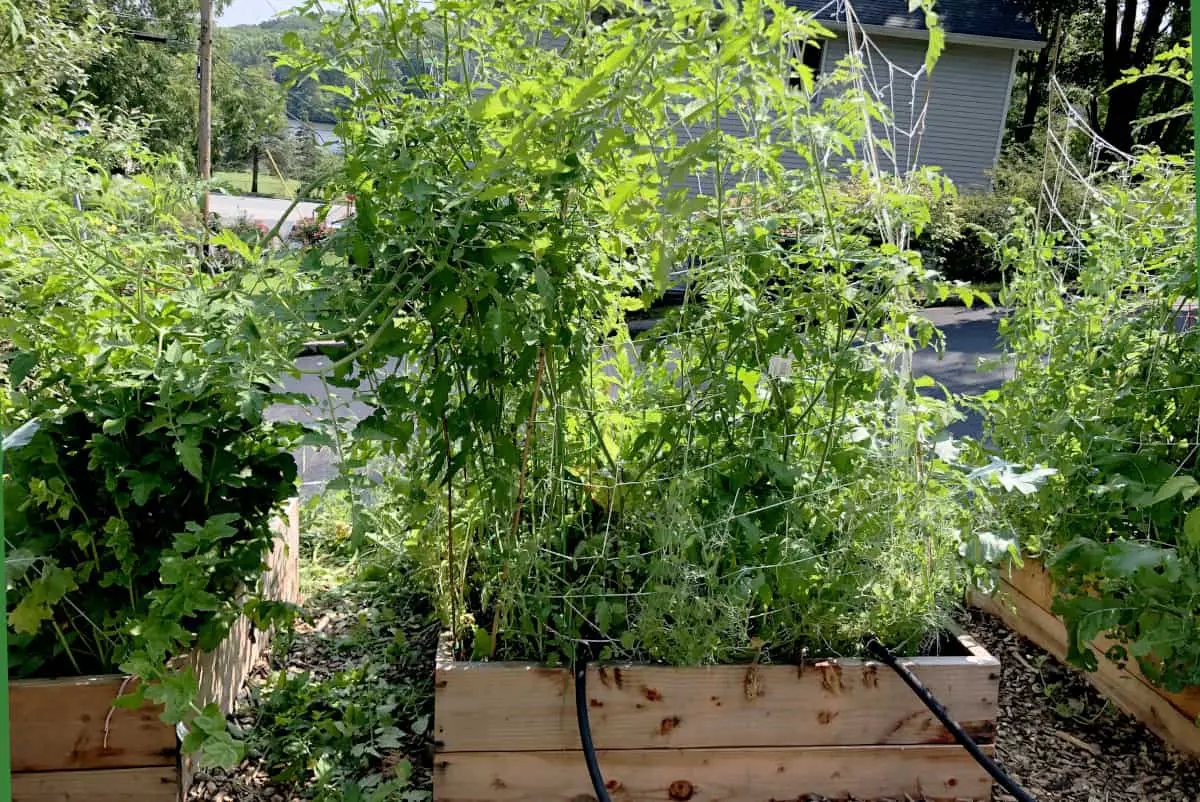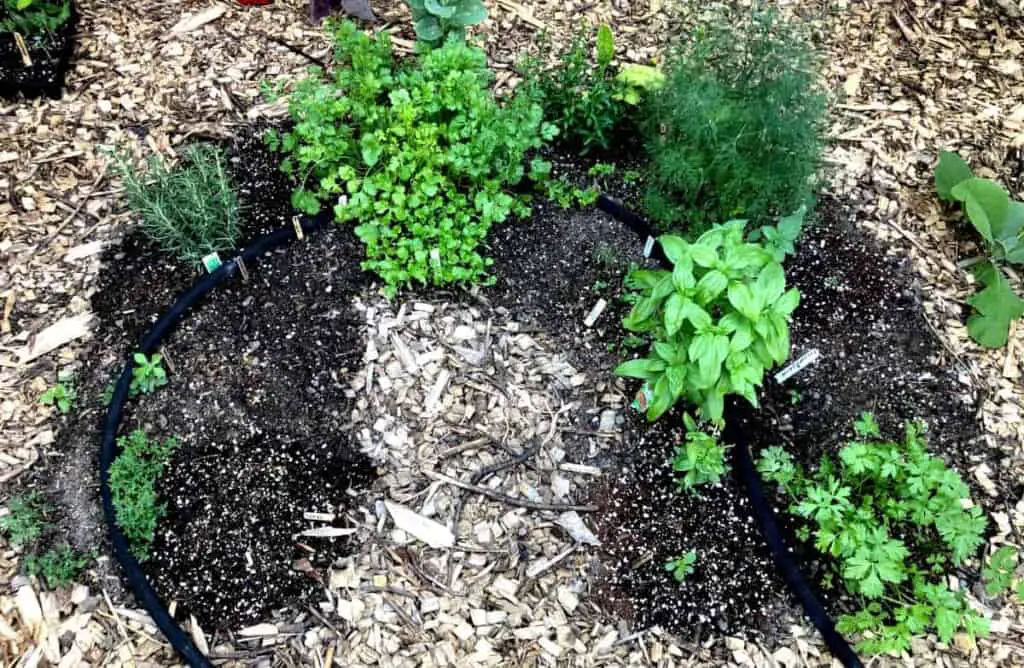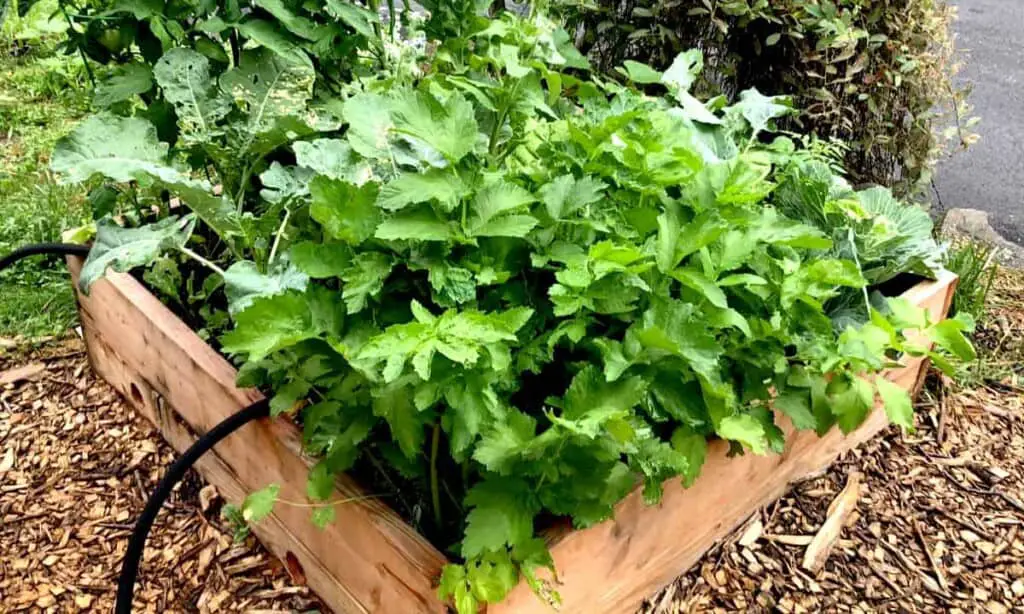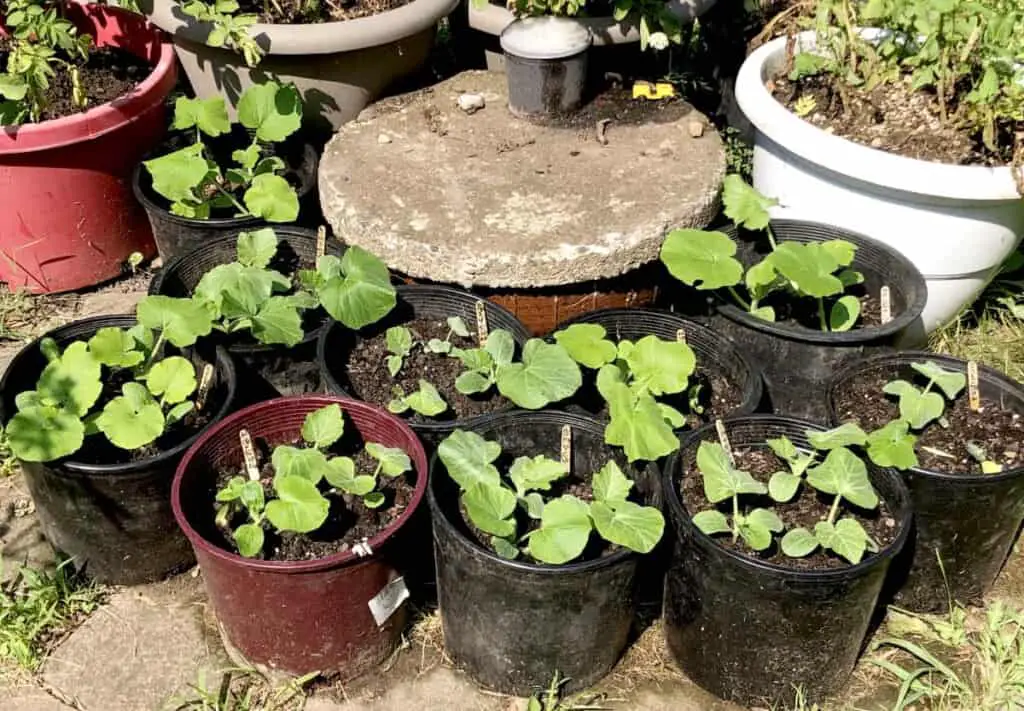During my gardening endeavors, I have tried inground, container, and raised bed gardening. Each one has its advantages and disadvantages. It is by your researching and experiencing different varieties of gardening types that you will be able to pick the most suitable gardening type for you. Currently, about 90% of my garden is in raised beds, this works for my property and personal efficiency the best.
The best type of garden for vegetables is an inground garden, a raised bed garden, and a container garden. Those three types of gardening work best for setting up a pantry-stocking garden and are most commonly used among home gardeners.

What is an inground garden?
An inground garden is a garden directly set up in the ground. It doesn’t require any building materials and therefore it is cheaper and might be also faster to set up compared to raised beds or container gardens.

In an inground garden, plants are planted directly in the ground, therefore the inground garden soil needs to be workable at least 8-12 inches deep.
Befits of an inground garden:
- Easy to set up
- No building structures required
- An affordable way to start a garden
- Able to use natural soil available
Disadvantages of an ingrown garden:
- The ingrown garden is portable
- You have to kneel and bend over all the way down to the ground
- Slowest to warm up in spring
- Depending on your soil, it might take a very long to make your native soil suitable for growing vegetables
I you would like a step-by-step guide on how to construct an in-ground garden, visit my other article How to build an in-ground garden for beginners.
What is a raised bed garden?
A raised bed garden is a garden set up above ground level using raised beds. The soil is contained in beds made of various materials available. The beds are most commonly built from wood, metal, plastic, rocks, and blocks. Beds can be any shape and built from any materials you have available as long as they are safe and can contain and hold soil well. Raised garden beds are then filled with soil in which you will plant and grow your vegetables.

Befits of a raised bed garden:
- Enables you to fill the garden beds with preferred soil
- The soil warms up quicker than in an inground garden and allows for plating earlier in spring
- Easier to weed, maintain, and harvest your garden
- Depending on the height of your garden beds it doesn’t need much bending or kneeling
Disadvantages of a raised bed garden:
- Can be costly to start
- Requires structures-raised beds to be made or bought and filled
- Difficult to move one set up
- Can overheat and dry out quicker than an inground garden in a hot climate
What is a container garden?
A container garden is also called a pot garden. It is a gardening type that uses pots and containers to grow plants. A container in which a plant is grown is an enclosed and usually portable subject filled with soil. For beginners who just want to try to set up and grow a small garden or just a couple of plants this gardening type might be the easiest one to start with. Container gardening is the most convenient style when growing plants, especially in rented homes or apartments. It is a style that allows you to grow plants even if you have no piece of land available. With this method, you can grow food indoors, on a patio, driveway, or balcony. It is the most versatile gardening style and easiest to move around if needed.
For step-by-step instructions on how to construct a container garden, visit How to start a container garden for beginners

Befits of a container garden:
- Great for beginners to start with as easy to downsize or expand
- Can utilize empty space of any size available for growing
- Easy to move around
- Easy to maintain weeds and plants
- No lot of land required can be set on any surface
Disadvantages of a container garden:
- Can overheat and dry quickest
- If expanding greatly, it can get costly to obtain new planters and quality soil
- Can get time and effort-consuming if maintaining an expansive container garden as each pot needs to be individually prepped, fertilized, and often watered in a hot climate to prevent overdrying
- Can be challenging to maintain proper nutrients for each plant in a container
How to choose the best garden style for your pantry stocking garden
Each of us deals with different situations, climates, and spaces available for setting up our gardens. Each of us therefore will choose different garden styles for various reasons. When choosing the best garden style for your situation, consider these most important factors.
- Amount of space available for the garden. For those who only have a small space, such as a balcony, or rent an apartment or a home where they are not able to use the ground to set up a permanent garden, I would recommend a container garden as this one is easy to utilize small growing spaces and is cleanest to keep your landlord happy.
- If you live in a hot climate, I would recommend either an inground garden or a raised bed one. Pots dry very fast in hot weather and it will be a challenge to keep the plants adequately moist while you’re at work or out and about for long hours daily. I had a tower planter set up outside in zone 6. I was a full-time stay-at-home mom caring for a toddler, and homeschooling and I also maintained a garden. Considering my whole garden, a tower planter was the biggest challenge for me to maintain and required the most attention every day. In some areas, there is also a water restriction usage, if this is your case, I would definitely not recommend a container garden, unless you are just a beginner learning about gardening and wish to only plant a few pots outdoors.
- If you wish to have a large garden and plant most if not all of your pantry staples, I would recommend an inground or container garden. They are easier to expand vastly and provide adequate space for all your veggies, herbs, and fruit.
- If you are completely new to gardening you can start with any type of garden, just start small. In an inground garden, start with only a small lot. If you chose raised bed style, set up only one garden bed, or only a handful of pots if you chose to go with a container garden. Learn to maintain a small garden first and then expand it. If you start small you can expand anytime according to your abilities. If you, on the other hand, start with a large garden as a beginner you might get overwhelmed and surprised by the amount of work required and get quickly discouraged and give up. Small gardens equal small demands, and large gardens equal large demands. Start small and then expand according to your abilities.
- In my case, I have a multi-level lot on the food of the hill. I do not have one large level lot available, but rather a group of small uneven spots. In my case, a raised bed garden works best. To make my growing surface as level as possible, I can dig parts of a garden bed in the ground and leave the rest sitting on top to make it level. Garden beds work great on uneven ground.
- I also fight lots of pests from small cabbage moths to chipmunks to black bears and deer. Garden beds allow me to protect my crop the best utilizing coverings such as netting, tulle, or thick frost cover.
- If you have a large level lot available and envision growing a large amount of food, then definitely go with an inground garden. This garden style utilizes large space the best and allows you to grow the largest amount of produce.
Think about your climate, amount of growing pace and its conditions available, starting costs, your knowledge and gardening experience, and how much produce you wish to grow, and chose the gardening style that suits your needs best. After all, later on, as you work your garden you will learn what you lack and amend things accordingly. Perhaps you will start with one style and later switch to another, or add another to the existing one. Gardening is a never-ending learning and personal growth; most important thing is to start your garden now, everything else can be adjusted on the go.

